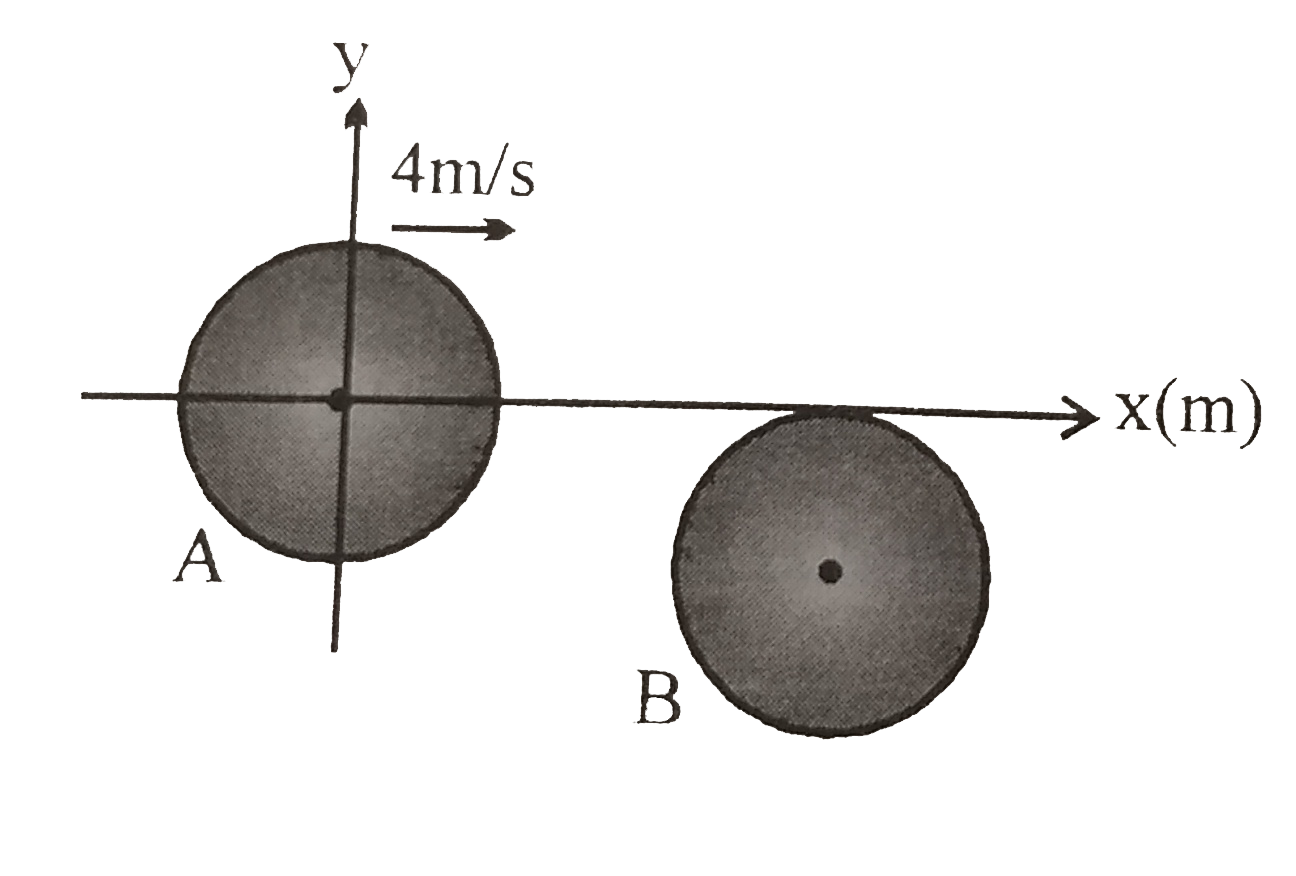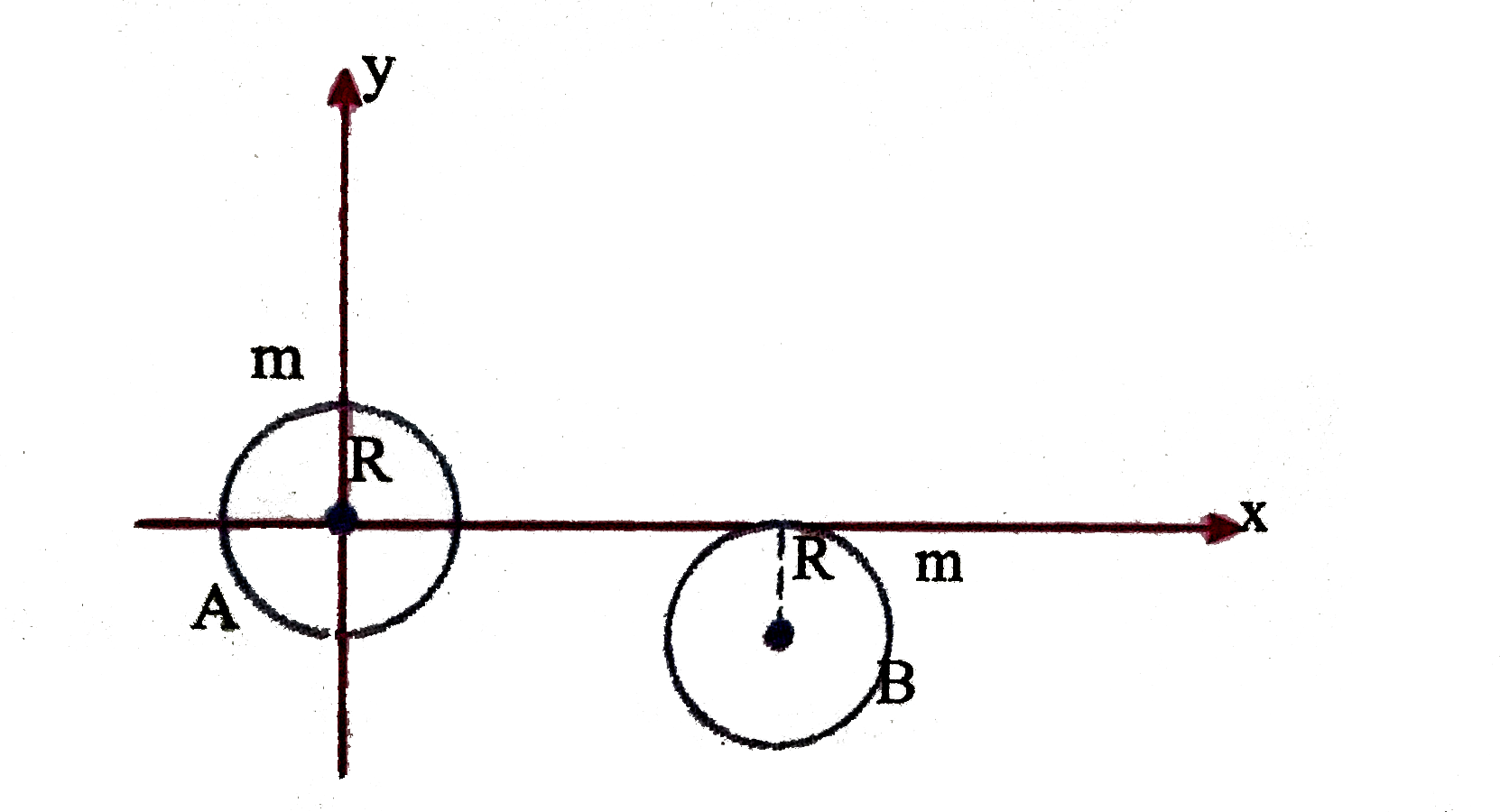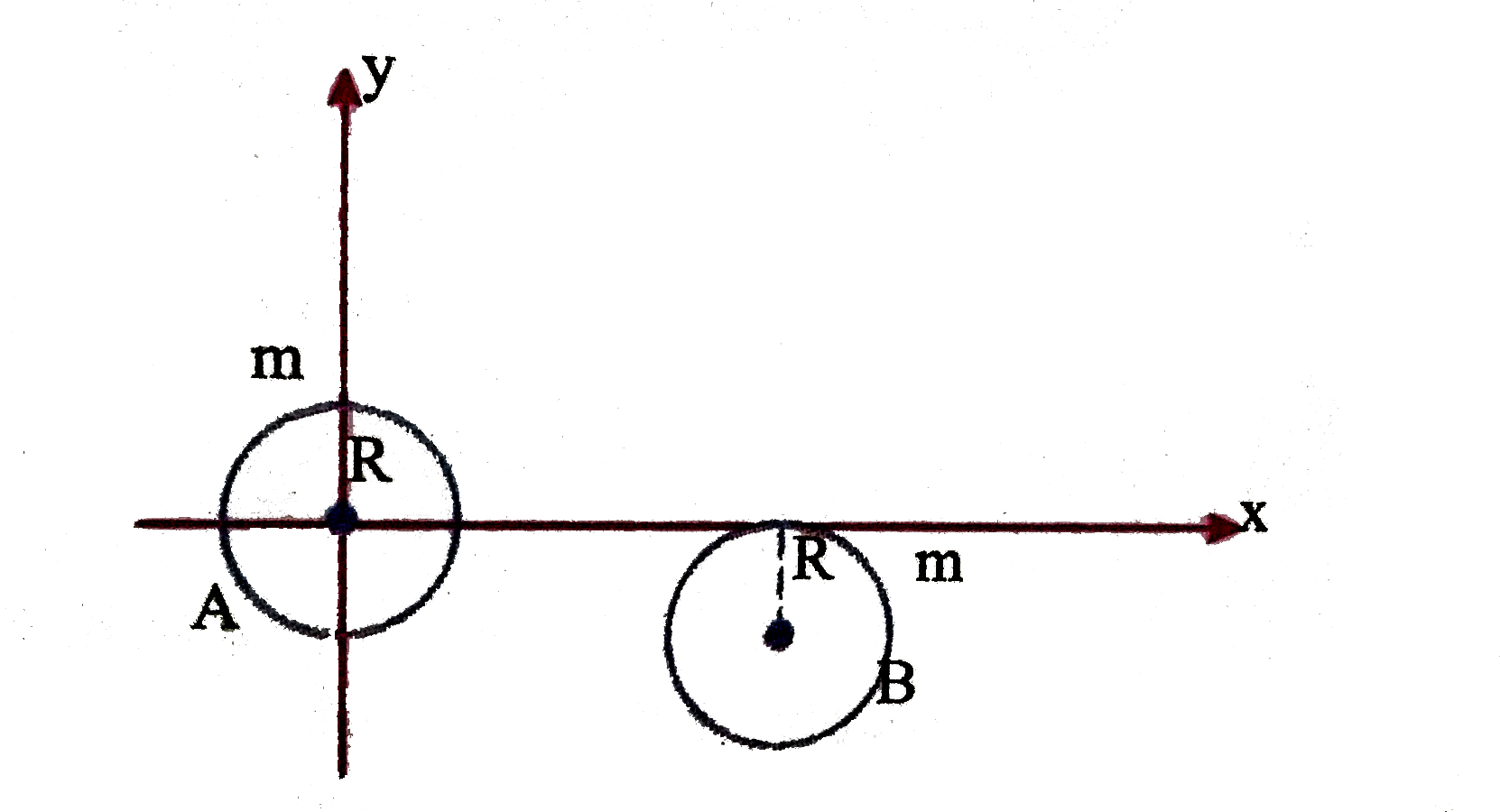Two smooth balls A and B, each of mass m and radius R, have their centres as shown in fig. Ball A, moving along positive x-axis, collides with ball B. Just before the collision, speed of ball 'A' is 4m/s and ball 'B' is stantionary. The collision

Coefficient of restitution during the collision is changed to 12, keeping all other parameters unchanged. What is the velocity of the ball 'B' after the collision.

By Newton's experimental law
12=v2−v1(4cos30∘)
v2−v1=√3 ......(i)
By conservation of momentum along line of collision
m4√32=mv1+mv2
v1+v2=2√3 .....(ii)
From equation(i) & (ii),
v1=√32m/s, v2=3√32m/s
→v1=3√32[cos30∘ˆi+sin30∘(−ˆj)]m/s
=(94ˆi−3√34ˆj)

Topper's Solved these Questions
- CENTRE OF MASS & MOMENTUM CONSERVATIONBOOK - BANSALCHAPTER - CENTRE OF MASS & MOMENTUM CONSERVATIONEXERCISE - Solved Examples
15 Videos
- CENTRE OF MASS & MOMENTUM CONSERVATIONBOOK - BANSALCHAPTER - CENTRE OF MASS & MOMENTUM CONSERVATIONEXERCISE - Practice Exercise
20 Videos
- GRAVITATIONBOOK - BANSALCHAPTER - GRAVITATIONEXERCISE - EXERCISE -4 Section - B
6 Videos
Similar Questions
A glass ball collides with an identical ball at rest with v0=2 m/sec. If the coefficient of restitution of collision is e = 0.5, find the velocities of the glass balls just after the collision.
View SolutionA ball of mass m moving with velocity u strikes another identical ball at rest. Find the velocities of the balls after the collision if the coefficient of restitution is e and the collision is head -on. Also , calculate the loss in K.E.
View Solution
Knowledge Check
Two smooth balls A and B, each of mass m and radius R, have their centres as shown in fig. Ball A, moving along positive x-axis, collides with ball B. Just before the collision, speed of ball 'A' is 4m/s and ball 'B' is stantionary. The collision

What is velocity of ball 'B' after collision isA(3ˆi−√3ˆj)m/sB(2√3ˆi−2√3ˆj)m/sC(2ˆi−2√3ˆj)m/sD(√3ˆi−√3ˆj)m/sTwo smooth balls A and B, each of mass m and radius R, have their centres as shown in fig. Ball A, moving along positive x-axis, collides with ball B. Just before the collision, speed of ball 'A' is 4m/s and ball 'B' is stantionary. The collision

Velocity of the ball 'A' just after the collision isA(i+√3ˆj)m/sB(i−√3ˆj)m/sC(2i+√3ˆj)m/sD(2i+2ˆj)m/sTwo smooth balls A and B, each of mass m and radius R, have their centres as shown in fig. Ball A, moving along positive x-axis, collides with ball B. Just before the collision, speed of ball 'A' is 4m/s and ball 'B' is stantionary. The collision

Impluse of the force exerted by 'A' on 'B' during the collision is equal toA(√3mˆi+3mˆj)kg−msB(√32mˆi−3mˆj)kg−msC(3mˆi−√3mˆj)kg−msD(2√3mˆi−3mˆj)kg−ms
Two smooth balls A and B, each of mass m and radius R, have their centre at (0,0,R) and (5R,-R,R) respectively, in a coordinate system as shown. Ball A, moving along positive x-axis, collides with ball B. Just before the collision, speed of ball A is 4m/s and ball B is stationary. The collision between the balls is elastic. Velocity of the ball A just after the collsion is

View SolutionTwo smooth balls A and B, each of mass m and radius R, have their centers at (0, 0, R) and at (5R, -R, R) respectively, in a coordinate system as shown. Ball A, moving along positive x axis, collides with ball B. Just before the collision, speed of ball A is 4m/s and ball B is stationary. The collision between the ball is elastic.

Impulse of the force exerted by A and B during the collision, is equal to
View SolutionA ball of mass 1kg is dropped from a height of 3.2m on smooth inclined plane. The coefficient of restitution for the collision is e=1/2. The ball's velocity become horizontal after the collision.

View SolutionA 2.5-kg ball and a 5.0-kg ball have an elastic collision. Before the collision, the 2.5-kg ball was at rest and the other ball had a speed of 3.5 m/s. What is the kinetic energy of the 2.5-kg ball after the collision?
View SolutionA ball moving with velocity of 6 m/s strikes an identical stationary ball. After collision each ball moves at an angle of 30∘ with the original line of motion. What are the speeds of the balls after the collision ?
View Solution